Thingiverse

Hydrodynamic Plane Wave Generator
by Thingiverse
Last crawled date: 4 years, 2 months ago
This is my version of a Hydrodynamic Plane-Wave Generator as designed by:
D. M. Harris, J. Quintela, V. Prost, P.-T. Brun, & J. W. M. Bush
Department of Mathematics, Massachusetts Institute of Technology, Cambridge, USA
E-mail: pierrethomas.brun@gmail.com
Here is a link to their design:https://math.mit.edu/~bush/wordpress/wp-content/uploads/2016/09/JOVI-S-20161.pdf
I basically followed their design with the following changes:
I used an old Dell laptop charger that I had laying around. It outputs 19.5 volts at 4.62 amps.
I used a modular frequency generator (purchase from Amazon in kit form KKmoon XR2206) in lieu of using a cell phone with the frequency generator application. I will be using this in public demonstrations and felt this would be easier.
The frequency generator requires a voltage input from 9-12 volts. I added a voltage buck module (Amazon - any model will do - I got one with a voltage display - button changes display from input voltage to output voltage) to reduce the voltage to the frequency generator to 10.0 volts.
For personal use the cellphone with the frequency generator application should work (frequency generator and buck module would not be required).
The amplifier model I used is "AOSHIKE TPA3116 DC 12-24v 100W Subwoofer Amplifier Board - also from (you guessed it) Amazon.
The speaker is a 6.5" 8 ohm 30 watt scrounged from a friend - Thanks Camilo.
I use linseed oil in lieu of silicon oil specified (easy to obtain). I will be experimenting with other oils.
The oil dish is Amazon:
100 mm Glass Petri Dish, Autoclavable Tissue Culture Plate, Borosilicate Glass, Pack of 2
by Chang Bioscience
The light strip I used is Amazon:
LEDMO LED Strip Lights, SMD 2835 Non-Waterproof LED Strip DC12V 600LEDs 16.4Ft 6000K 15Lm/LED High CRI80 LED Light Strips 3 Times Brightness Than SMD3528 LED Strip White
One amplifier output powers the speaker and the other powers the light strip.
The strobe effect from the light strip effectively stops the bouncing motion of the oil drop and/or shows it bouncing in slow motion. Is it magic or is it science? See the first picture.
Interesting stuff happens both above and below the Faraday threshold. It may be possible to use this as an analogy to demonstrate talbot effects, quantum effects etc. But its also just fun to bounce a drop of oil on an oil surface!
The OpenScad file includes all the pieces as well as the electronic components. Use comments to control what gets displayed or printed.
Adjust the box height for the speaker that you use.
I also started work on a "cover" for the petri dish - the idea being to 3d print a cylinder to accept an "O" ring to seal the oil in the dish for transport or storage. This is not complete yet.
I mounted all the electronics on the outside of the box (I feel this has some educational value). Also I was not sure how warm or hot the components would get during extended use. I have only run it for a few hours at a time so far and all the components and heat sinks remain cool to the touch. It may be possible to mount all the components inside the box with just the knobs protruding - the box may need to be slightly larger to accomplish this - you can move the electronic components around to test other configurations.
I spray pained the bottom of the petri dish dark brown (black would have been better) to help with seeing the drops.
I used 4 small blobs of epoxy (JB Kwik) to mount the petri dish to the speaker cone.
I mounted the speaker to the bottom of the box using 4 small blobs of epoxy (JB Kwik).
I mounted the light ring to the speaker using a bead of Liquid Nails Small Projects Adhesive.
Enjoy.
D. M. Harris, J. Quintela, V. Prost, P.-T. Brun, & J. W. M. Bush
Department of Mathematics, Massachusetts Institute of Technology, Cambridge, USA
E-mail: pierrethomas.brun@gmail.com
Here is a link to their design:https://math.mit.edu/~bush/wordpress/wp-content/uploads/2016/09/JOVI-S-20161.pdf
I basically followed their design with the following changes:
I used an old Dell laptop charger that I had laying around. It outputs 19.5 volts at 4.62 amps.
I used a modular frequency generator (purchase from Amazon in kit form KKmoon XR2206) in lieu of using a cell phone with the frequency generator application. I will be using this in public demonstrations and felt this would be easier.
The frequency generator requires a voltage input from 9-12 volts. I added a voltage buck module (Amazon - any model will do - I got one with a voltage display - button changes display from input voltage to output voltage) to reduce the voltage to the frequency generator to 10.0 volts.
For personal use the cellphone with the frequency generator application should work (frequency generator and buck module would not be required).
The amplifier model I used is "AOSHIKE TPA3116 DC 12-24v 100W Subwoofer Amplifier Board - also from (you guessed it) Amazon.
The speaker is a 6.5" 8 ohm 30 watt scrounged from a friend - Thanks Camilo.
I use linseed oil in lieu of silicon oil specified (easy to obtain). I will be experimenting with other oils.
The oil dish is Amazon:
100 mm Glass Petri Dish, Autoclavable Tissue Culture Plate, Borosilicate Glass, Pack of 2
by Chang Bioscience
The light strip I used is Amazon:
LEDMO LED Strip Lights, SMD 2835 Non-Waterproof LED Strip DC12V 600LEDs 16.4Ft 6000K 15Lm/LED High CRI80 LED Light Strips 3 Times Brightness Than SMD3528 LED Strip White
One amplifier output powers the speaker and the other powers the light strip.
The strobe effect from the light strip effectively stops the bouncing motion of the oil drop and/or shows it bouncing in slow motion. Is it magic or is it science? See the first picture.
Interesting stuff happens both above and below the Faraday threshold. It may be possible to use this as an analogy to demonstrate talbot effects, quantum effects etc. But its also just fun to bounce a drop of oil on an oil surface!
The OpenScad file includes all the pieces as well as the electronic components. Use comments to control what gets displayed or printed.
Adjust the box height for the speaker that you use.
I also started work on a "cover" for the petri dish - the idea being to 3d print a cylinder to accept an "O" ring to seal the oil in the dish for transport or storage. This is not complete yet.
I mounted all the electronics on the outside of the box (I feel this has some educational value). Also I was not sure how warm or hot the components would get during extended use. I have only run it for a few hours at a time so far and all the components and heat sinks remain cool to the touch. It may be possible to mount all the components inside the box with just the knobs protruding - the box may need to be slightly larger to accomplish this - you can move the electronic components around to test other configurations.
I spray pained the bottom of the petri dish dark brown (black would have been better) to help with seeing the drops.
I used 4 small blobs of epoxy (JB Kwik) to mount the petri dish to the speaker cone.
I mounted the speaker to the bottom of the box using 4 small blobs of epoxy (JB Kwik).
I mounted the light ring to the speaker using a bead of Liquid Nails Small Projects Adhesive.
Enjoy.
Similar models
grabcad
free

Aiyima TDA7489 2.1 Amplifier Board
...c36v
recommended power supply voltage: dc32v
minimum output current: 5a (i think they meant input)
speaker parameters: 4-8 ohm
thingiverse
free

2020 COB LED strip mount by rmoro
...to mount the circuit boards and switch in the links below:
circuit board mount for 2020
circuit board mount for 2020
switch panel
thingiverse
free

Strip Light Bracket for Mini Mill by BobInOK
... of the switch box to the output of the wall wart. this eliminates extra wires and the lights come on when the mill is turned on.
3dwarehouse
free

Petri Dish 90 mm diameter
...mmon plastic petri dish as a light and handy component, modeled full scale from a real one. #90mm #diameter #dish #petri #plastic
thingiverse
free

Front LED Light by Yaxisme
...der the hotend so i came up with this. i just used some led strip and a xt60 splitter and male xt60 to wire it up to the 24 volt.
thingiverse
free

LED Strip Junction Box by jpmader
...se
this is an led strip junction box to mount to the outside of any surface where self-adhesive led strip lights are being used.
thingiverse
free
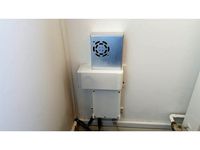
Box for PSU 12V 350W with LED amplifier + Power swicth + C13 wire by manticus
...-stripe-1pc-ir-44keys-rgb-controller-1pc-12v/1964187991.html?spm=2114.13010608.0.0.3cjkyk
an other box for the fan is in progress
grabcad
free

Electromagnetic actuator
...gnetic forced vibration actuator with permanent magnet
for use this need frequency generator & power amplifier with 3a output
grabcad
free

Class R Transformer for Microwave Oven
... are doing."
source:
https://www.quora.com/how-many-volts-does-the-output-of-a-transformer-of-a-microwave-oven-have?share=1
thingiverse
free

LED STRIP ANGEL by mitpro
... that their light have to be indirectly!
improvements are welcome!
update:
added model for 12mm wide and 1 mm thik led-strips ;)
Hydrodynamic
thingiverse
free

Hydrodynamic Spatula with Port-and-Starboard attachments by AMT_Industries
...hors listed in the above link. i merely split this up for printing.
uses jigsaw blade handle by tadziurski as part of the handle.
thingiverse
free

The Hydro Penguin Flask by mrlanethescienceguy
...my students were working on their first lego league hydrodynamic research project. they learned that penguins had a glad...
sketchfab
$15

penguin
...the word spheniscus , literally “wedge”, referring to its hydrodynamic shape when swimming. - penguin - buy royalty free...
thingiverse
free

Speed Boat 3 - Catamaran add-ons by comPVter
...boat by wersy. i'm not looking for speed or hydrodynamic because the project is an autonomous guided arduino boat....
thingiverse
free
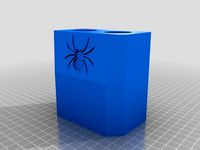
Spidr by manauman
...are an elementary first lego league team. four our hydrodynamic project this year, we invented a device that uses...
thingiverse
free

Underwater Glider Design by MelihKa
...underwater glider design by melihka thingiverse this is a hydrodynamic test model of my underwater glider design. need only...
3dcadbrowser
free

DTMB 5415 Model Naval Combatant 3D CAD Model
...widely used in experimental and computational studies of naval hydrodynamic, it features a bulbous bow and transom stern.this 3d...
thingiverse
free

Flower Planter or Beer Torpedo! by futurejames
...didn't help buoyancy but they definitely made it more hydrodynamic so while it was a dismal failure as a...
thingiverse
free

Frosthaven: Piranha Pig by VirtuallyJason
...biologically plausible (that's the "shark" version, with a more hydrodynamic nose shape). as always, the .blend file and any...
Wave
3ddd
$1
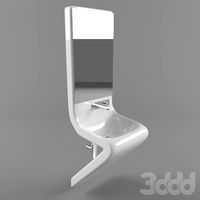
Wave
...wave
3ddd
wave
wave
3ddd
free
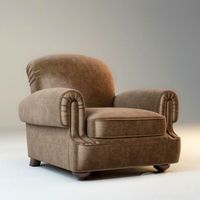
Mobilidea Wave
...mobilidea wave
3ddd
mobilidea , wave
mobilidea wave
design_connected
$22

Wave
...wave
designconnected
royal botania wave computer generated 3d model. designed by nyberg, erik.
3ddd
$1

Elica Wave
... вытяжка , островная
вытяжка подвесная elica wave
3d_export
$5
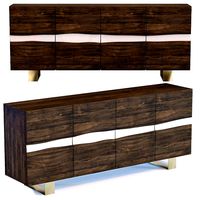
sideboard wave
...sideboard wave
3dexport
sideboard wave kare design
turbosquid
$3

Wave
... available on turbo squid, the world's leading provider of digital 3d models for visualization, films, television, and games.
3ddd
$1

Бра PANZERI WAVE
... wave , led , panzeri wave
бра panzeri wave
3ddd
$1
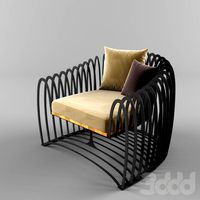
Wave armchair
...
wave , jihye choi
кресло wave armchair от jihye choi. сделано из сталя, дерева и ткани.
3ddd
$1

wave light
...wave light
3ddd
h :117 w:27
wave light
3ddd
$1
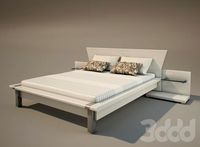
Gautier (wave)
...gautier (wave)
3ddd
gautier , wave
кровать мебельной фабрики gautier
Plane
3d_export
$5

Plane
...plane
3dexport
unusual plane)
archibase_planet
free

Plane
...plane
archibase planet
plane lath slat
plane n011207 - 3d model (*.gsm+*.3ds) for interior 3d visualization.
design_connected
$11
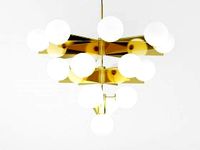
Plane
...plane
designconnected
tom dixon plane computer generated 3d model. designed by dixon, tom.
turbosquid
$50
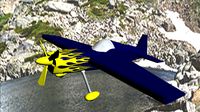
Plane
...e
turbosquid
royalty free 3d model plane for download as fbx on turbosquid: 3d models for games, architecture, videos. (1290318)
turbosquid
free
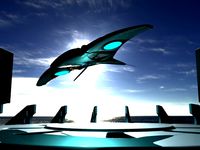
plane
...ne
turbosquid
royalty free 3d model plane for download as ma on turbosquid: 3d models for games, architecture, videos. (1655587)
turbosquid
free

Plane
...osquid
free 3d model plane for download as 3ds, obj, and fbx on turbosquid: 3d models for games, architecture, videos. (1385376)
3d_export
$5
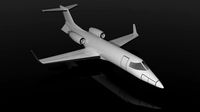
plane
...plane
3dexport
private jet
3d_export
$5

simple plane
...simple plane
3dexport
plane for war
turbosquid
$20

Plane
...royalty free 3d model plane for download as dae, fbx, and obj on turbosquid: 3d models for games, architecture, videos. (1607715)
3d_ocean
$18

Toy Plane
...toy plane
3docean
hi high detailed plane toy toys
a high detailed toy plane
Generator
3d_export
$17
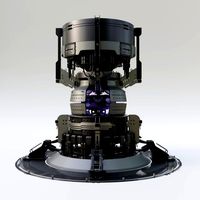
Generator
...generator
3dexport
generator
archibase_planet
free
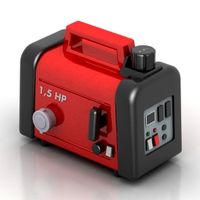
Generator
...base planet
generator electric generator
generator electric n300715 - 3d model (*.gsm+*.3ds+*.max) for interior 3d visualization.
design_connected
$20
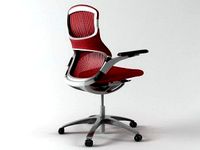
Generation
...generation
designconnected
knoll generation computer generated 3d model. designed by formway design.
3d_export
$8

generator
...generator
3dexport
generator - obj, 3ds, fbx.
3d_export
$7

generator
...generator
3dexport
generator extures 4k resolution, basecolor -normal -metallic -ao-roughness-height tris:3084
turbosquid
free

generator
...rator
turbosquid
free 3d model generator for download as max on turbosquid: 3d models for games, architecture, videos. (1492909)
3ddd
$1
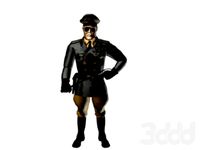
general
...general
3ddd
генерал
turbosquid
$99

generator
...urbosquid
royalty free 3d model generator for download as ma on turbosquid: 3d models for games, architecture, videos. (1514125)
turbosquid
$2
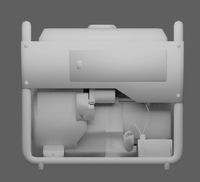
Generator
...rbosquid
royalty free 3d model generator for download as fbx on turbosquid: 3d models for games, architecture, videos. (1245541)
3d_export
$9

generator
...generator
3dexport
